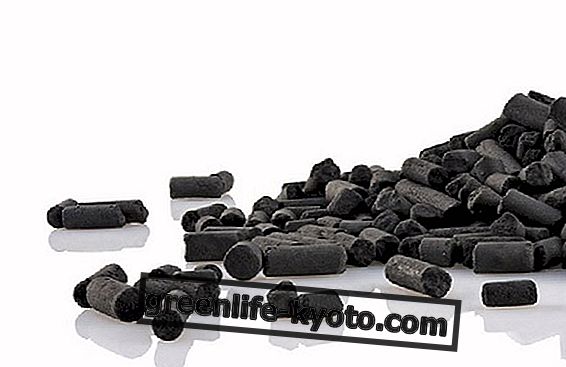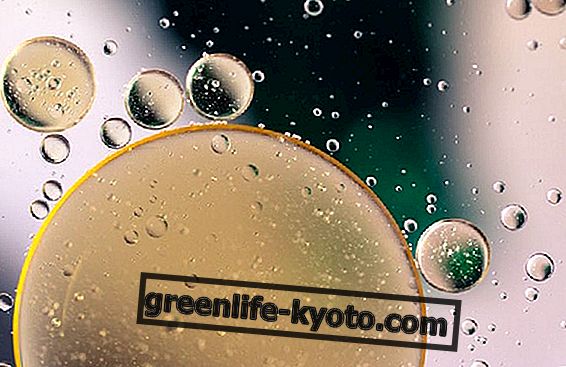
The hiatal hernia is an anatomical modification of the upper part of the stomach upwards, towards the diaphragm, an extroflexion along the esophageal hiatus.
In itself the hiatal hernia can be completely asymptomatic, but it is often associated with gastroesophageal reflux, gastritis, epigastric spasms .
Essential oils are able to fit into the common treatments for the symptoms of hernia and in the correct diet and help to calm the fire that comes out of its borders.
The essential oils indicated for hiatal hernia are those of an anti-inflammatory and antispasmodic nature such as chamomile, sweet fennel, geranium and peppermint.
Essential oil of chamomile matricaria
Chamomile essential oil has a particular blue / blue color, is very delicate and does not irritate. It has anti-inflammatory, analgesic, healing, antispasmodic and digestive properties. It is a sedative of the central nervous system .
The camazulene of which the matricaria variety is particularly rich, soothes the "flames" of the stomach, and at the same time calms the "flames" of the psyche. It is an excellent rebalancer both on a physical level and on a vibrational level . In fact, chamomile is a remedy that is affected both by the influence of the Sun (the yellow little cap is its emblem) and by the Moon (its corollary of white petals): the essential oil is the concentrate of these two important energies and represents a precious remedy for human well-being.
Two or three drops in a little carrier oil, perhaps jojoba, and massage at the diaphragmatic domes. Two drops in a little honey with hot water to be taken by mouth help to sedate the gastric spasms.
It is important that the essential oil is very pure . Always be advised by your trusted herbalist.

Essential oil of sweet fennel
Fennel essential oil is yellow with a sweet and slightly herbaceous scent. It has digestive, carminative, antispasmodic, diuretic, choleretic and cholagogue properties (it stimulates the production of bile).
Fennel is particularly indicated for the digestive system on which it performs its heating and antispasmodic activity indicated for the treatment of swellings, eructations, epigastric spasms.
At a more subtle level the essential oil of fennel is indicated for the subjects "earth", those who tend to brood, who remain tied to circular thoughts and live communication blocks. Due to the presence of phytosterols, plant hormones with a similar estrogen action, it is not recommended for use during pregnancy and lactation.
Fennel essential oil is recommended only for external use (for better internal use the infusion). Two or three drops in a carrier oil and massage the abdominal cavity: stomach and liver in a circular clockwise direction to stimulate its functions.

Geranium essential oil
The essential oil of Geranium is greenish in color with a sweet aroma and a rosy note. It is very delicate and can also be used for children.
It has anti-inflammatory, antiseptic, healing, decongestant, analgesic, antispasmodic, anxiolytic properties. The essential oil is not derived from the ornamental geranium that we all know but from Geranium Macrorrhizum or from the Pelargonium .
This remedy works very emotionally : often the problems related to hiatal hernia are of a psychosomatic nature and associating an essential oil with marked rebalancing properties of the nervous system completes the path to psychophysical well-being.
The use of geranium in thin aromatherapy can be done with a few drops in an essence burner, or two drops on the wrists and temples. It can also be associated with the essential oil of chamomile to massage at the stomach and epigastrium.

Peppermint essential oil
The essential oil of peppermint is yellow-green. Its scent is extremely fresh and balsamic. His energy is avowedly yang, just breathe some exhalation and the concept arrives strong and clear to the hypothalamus!
It has antispasmodic, analgesic, digestive and anti-inflammatory properties. It is a tonic of the central nervous system. At the gastric level it stimulates digestion, bile flow, contrasts painful spasms, and gas formation.
It would be very effective orally, but it must be done with extreme caution under the control of a specialist and very low dosage well mixed with honey, because the ketonic component is toxic and can irritate the mucous membranes.
For external use, I recommend combining the essential oil of mint with the essential oil of sweet orange (to dampen the "ice" effect) in a carrier oil to be massaged on the stomach. Due to its high ketone content, in any case, moderate use must be made. It is irritating to mucous membranes and is not recommended for use in pregnancy and in young children.














